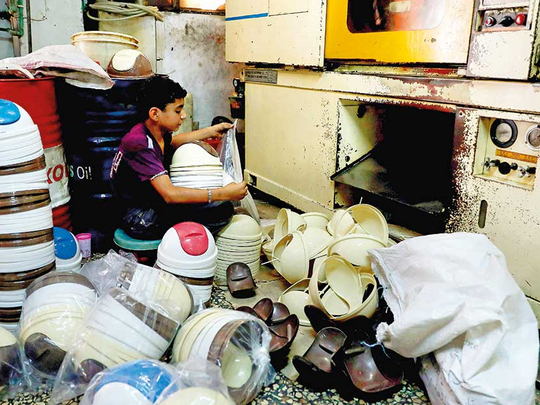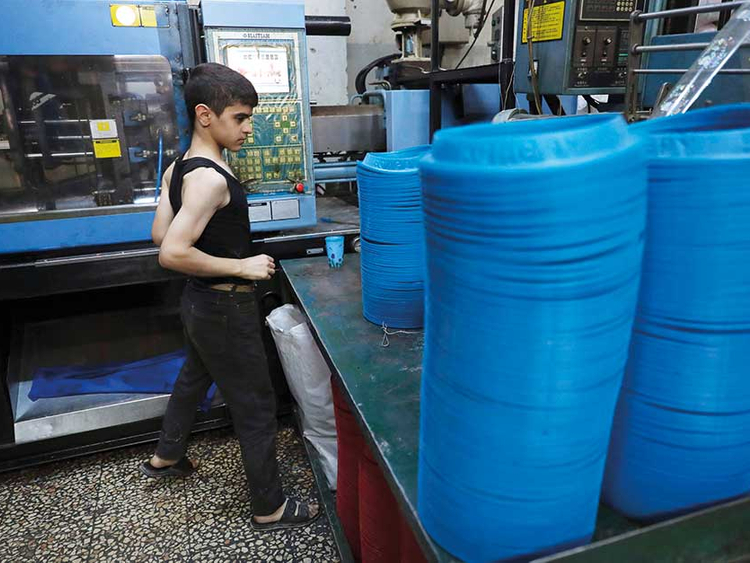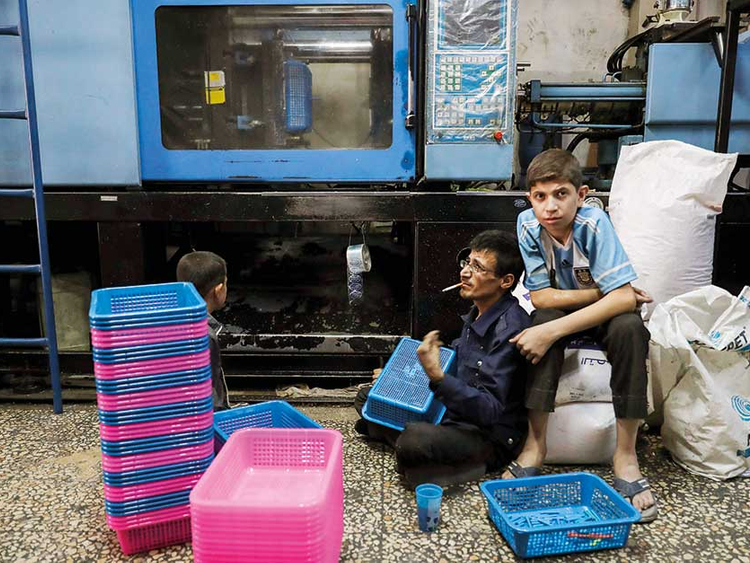
ALEPPO: In a formerly rebel-held district of Syria’s Aleppo, factory owner Karam allows himself a small smile as he watches his machines back in action, churning out plastic goods.
Six months after Syria’s army captured the country’s one-time economic powerhouse, dozens of manufacturers with small and medium-sized factories are cautiously returning to the city’s east, once a stronghold of opposition fighters.
“I had 30 machines, and there are five left. I lost $1.5 million when my warehouse outside the city was set alight,” says Karam in his office in east Aleppo’s Al Kalasseh neighbourhood.
Miraculously, his factory building remains intact despite four years of brutal war in Aleppo that ended with the government’s recapture of the city in December.
Just a month later, he decided to restart operations with his remaining machines, which melt and mould plastic granules into items including baskets and waste bins.
“Thank God, my losses were bearable, while others lost everything,” the 40-year-old tells AFP.
Syria’s conflict has ravaged the country’s economy since it began in March 2011 with anti-government protests, before spiralling into a complex war that has killed more than 320,000 people.
Al Kalasseh is one of 17 industrial zones scattered inside and around Aleppo, most of which fell into the hands of rebels when they entered the city in 2012.
Even now, the eastern sector of the city remains a moonscape of ruins, with mounds of rubble on streets lined by collapsed buildings with blown-out windows.
Billions in losses
The city’s Chamber of Industry estimates Aleppo’s industrial zones lost $55 billion during the course of the war.
Of the 1,326 small and medium-sized manufacturers in Al Kalasseh, around 200 have resumed operations, according to official figures, though with greatly reduced resources.
“I had 70 employees, now I have just five. The young people have left,” Karam says, speaking on condition that his family name not be used.
His factories used to run 24 hours a day, but the painfully high cost of fuel means he can only run his machines for 11 hours daily.
As a result, his monthly production has dwindled from 60,000 items before the conflict to just 6,000 now.
“Before (the war), we exported 70 per cent of our merchandise to Iraq, Jordan and Kuwait. Today, we export nothing.”
Magd Al Naasani is another of these industrialist “survivors”, with a textile factory in Al Kalasseh where automated weaving machines spin reels of thread.
Aleppo has long been famed for its textile production, and the sector represented 60 per cent of the city’s manufacturing before the war.
Like Karam, Al Naasani has had to adapt to new realities since reopening his factory a few weeks after the government retook the city.
“We used to sell six tonnes (5,400 kilograms) of fabric a week to factories making clothes. Today we sell 800 kilograms,” he says.
Al Naasani has another workshop in the Khan Al Alas area in western Aleppo province, which remains under rebel control.
“I don’t know what has happened to it,” he says.
‘Scrap metal’
Nadim Atrache, president of Al Kalasseh’s industrial committee, describes Aleppo as having been “the mother of the textile industry in the Arab world”.
“If the state and international organisations provide assistance, 70 per cent of the factories in Al Kalasseh will resurface within a year,” he tells AFP.
But in Leyramun, an industrial area on the northwestern edge of the city, there is less room for optimism.
The area was the scene of fierce fighting between government forces and opposition groups that has left a cemetery of workshops draped with a heavy silence.
“In Leyramun, 85 per cent of the factories — more than a thousand — have been completely destroyed,” says Bassel Nasri, deputy chairman of Aleppo chamber of industry.
“You can count on your fingers the number of people who have started renovation work,” he says.
“The machines here cost tens of thousands of dollars,” he adds.
The “Richi and Kaway” textile factory speaks to the breadth of the challenge facing owners.
Inside is a desolate sight — dust-covered machines under what is left of a roof smashed in by bombardment.
“These are not machines anymore, they are scrap metal,” says the factory’s chief technician Wahid in despair.
“It’s enough to make you cry,” adds another visiting industrialist.














